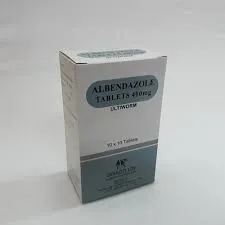- Afrikaans
- Albanian
- Amharic
- Arabic
- Armenian
- Azerbaijani
- Basque
- Belarusian
- Bengali
- Bosnian
- Bulgarian
- Catalan
- Cebuano
- Corsican
- Croatian
- Czech
- Danish
- Dutch
- English
- Esperanto
- Estonian
- Finnish
- French
- Frisian
- Galician
- Georgian
- German
- Greek
- Gujarati
- Haitian Creole
- hausa
- hawaiian
- Hebrew
- Hindi
- Miao
- Hungarian
- Icelandic
- igbo
- Indonesian
- irish
- Italian
- Japanese
- Javanese
- Kannada
- kazakh
- Khmer
- Rwandese
- Korean
- Kurdish
- Kyrgyz
- Lao
- Latin
- Latvian
- Lithuanian
- Luxembourgish
- Macedonian
- Malgashi
- Malay
- Malayalam
- Maltese
- Maori
- Marathi
- Mongolian
- Myanmar
- Nepali
- Norwegian
- Norwegian
- Occitan
- Pashto
- Persian
- Polish
- Portuguese
- Punjabi
- Romanian
- Russian
- Samoan
- Scottish Gaelic
- Serbian
- Sesotho
- Shona
- Sindhi
- Sinhala
- Slovak
- Slovenian
- Somali
- Spanish
- Sundanese
- Swahili
- Swedish
- Tagalog
- Tajik
- Tamil
- Tatar
- Telugu
- Thai
- Turkish
- Turkmen
- Ukrainian
- Urdu
- Uighur
- Uzbek
- Vietnamese
- Welsh
- Bantu
- Yiddish
- Yoruba
- Zulu
Դկտ . 03, 2024 19:41 Back to list
Oxytetracycline Injection Usage in Veterinary Medicine for Animal Health
Oxytetracycline Injection for Animals A Comprehensive Overview
Oxytetracycline is a broad-spectrum antibiotic that has been widely employed in both veterinary and human medicine since its development in the 1940s. Derived from the bacterium *Streptomyces aureofaciens*, this tetracycline antibiotic plays a crucial role in treating various bacterial infections in animals. Its effectiveness, coupled with cost efficiency, makes it a popular choice for veterinarians dealing with livestock and companion animals alike.
Pharmacology and Mechanism of Action
Oxytetracycline works by inhibiting bacterial protein synthesis, which is essential for bacterial growth and reproduction. It achieves this by binding to the 30S ribosomal subunit, preventing the attachment of aminoacyl-tRNA to the RNA-ribosome complex. This mechanism not only hinders the proliferation of bacteria but also aids in reducing the severity and duration of infections. As a result, oxytetracycline can effectively combat a range of Gram-positive and Gram-negative bacteria, making it versatile in treating infections in various species.
Indications for Use
Oxytetracycline injection is commonly indicated for the treatment of respiratory diseases, gastrointestinal infections, and systemic infections in animals. In food animals such as cattle, pigs, and poultry, it is frequently used to control conditions like pneumonia, shipping fever, and other respiratory diseases that can arise in crowded conditions. In companion animals, oxytetracycline may be prescribed for skin infections, urinary tract infections, and certain types of periodontal disease.
Beyond treating infections, oxytetracycline is also utilized for its anti-inflammatory properties and its ability to inhibit certain diseases in livestock. For example, it can be employed to manage infections caused by *Mycoplasma* and prevent the spread of pathogens in herds. Moreover, it is included in some feed formulations to promote growth in livestock, although its use in this context has come under scrutiny due to concerns over antibiotic resistance.
Administration and Dosage
oxytetracycline injection for animals

The administration of oxytetracycline can vary depending on the animal species and the nature of the infection. It is available in various forms, including injectable solutions, powders for oral administration, and mixed feed. The injection can be administered intramuscularly or intravenously, and dosing will depend on several factors such as the weight of the animal, severity of the infection, and overall health condition.
Veterinarians typically determine the appropriate dosage based on established guidelines, with careful consideration given to the risk of potential side effects. Common side effects include gastrointestinal upset, allergic reactions, and, in some instances, photosensitivity. Prolonged use can lead to the development of antibiotic-resistant bacteria, which is a significant concern for public health.
Safety and Precautions
While oxytetracycline is considered safe for use in animals, certain precautions should be taken. It is essential to adhere to dosage recommendations to avoid adverse effects and minimize the risk of resistance. Moreover, residues of oxytetracycline in animal products can pose health risks to consumers, highlighting the importance of withdrawal times before slaughter or milk collection.
Veterinarians play a vital role in educating animal owners about the proper use of oxytetracycline, emphasizing the need for responsible antibiotic use. This includes being vigilant about completing the full course of treatment, not using it for viral infections, and implementing good husbandry practices to reduce the incidence of diseases.
Conclusion
In conclusion, oxytetracycline injection remains an essential tool in veterinary medicine for treating bacterial infections in animals. Its broad spectrum of activity, coupled with its anti-inflammatory properties, makes it valuable in both livestock and companion animals. However, with the growing concern over antibiotic resistance, it is imperative for veterinarians and animal owners to use this antibiotic responsibly. Continued research and education will play a crucial role in ensuring that oxytetracycline remains an effective treatment option for the future.
-
Guide to Oxytetracycline Injection
NewsMar.27,2025
-
Guide to Colistin Sulphate
NewsMar.27,2025
-
Gentamicin Sulfate: Uses, Price, And Key Information
NewsMar.27,2025
-
Enrofloxacin Injection: Uses, Price, And Supplier Information
NewsMar.27,2025
-
Dexamethasone Sodium Phosphate Injection: Uses, Price, And Key Information
NewsMar.27,2025
-
Albendazole Tablet: Uses, Dosage, Cost, And Key Information
NewsMar.27,2025













